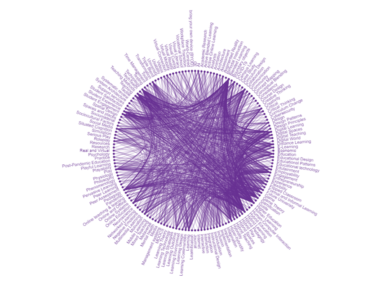Higher education institutions (HEIs) are increasingly adopting blended and online learning opportunities, to allow for a flexible, optimised student learning experience and to extend their reach globally. The need for this has been highlighted particularly during the Covid-19 pandemic which facilitated a widespread pivot to online.
To strategically pump-prime investment in blended and online learning, in 2013, the University of Glasgow (UofG) launched a five-year funding scheme which became known as BOLD: Blended and Online Learning Development. £2.34M was invested in two project strands: A (online distance learning programmes), and B (blended courses and programmes). This coincided with the development of Massive Open Online Courses (MOOCs) and a QAA Scotland funded project focused on transitions into and through blended learning.
To capture the learning from this project, 20 semi-structured interviews were carried out with academic staff involved in BOLD projects, typically early adopters. We asked about motivations, perceived benefits and challenges, enablers, and support needs.
What motivated staff?
Market demand factors included serving potential students who could not travel to Glasgow, including international students, serving professional and part-time learners, to increase student numbers, and scope for transnational education developments. Staff were keen to offer students flexible learning at point of need. Improving learning experiences was also uppermost in staff minds’; addressing deficits in existing face-to-face courses, as well as exploring how technology could enhance learning and teaching, in a way that supports a diverse cohort of learners.
What were the benefits?
The project transformed teachers’ approaches to teaching and assessment. Staff developed technology-enhanced learning and teaching (TELT) and media skills they could use in other courses, including chunking of content for online/blended delivery. Benefits to assessment practice included more constructively aligned course design, diversified assessment methods, scope for more formatives, and improved feedback dialogue. Teachers’ enjoyment of teaching was also enhanced. Other benefits included enhanced learner experience, in terms of flexibility and access. Teachers reported that students were more motivated and engaged and performed better.
What were the challenges?
The most significant challenge related to the time required to design, develop, and implement courses. A general recognition of staff time limitations was exacerbated by the time-consuming nature of producing online or blended courses. Technological challenges related to limitations of learning technology platforms, a low level of prior technological expertise, and fear or experience of technology failure. Adapting face-to-face activities for online delivery in a way that was not purely translational was a pedagogical challenge. Staff noted that some students experienced difficulty in transitioning to online learning, compounded by varying digital literacies. Digital equity issues including varying device ownership and internet access were also problematic.
What enabled staff?
Despite the challenges, enablers included supportive others: a central academic developer, the learning technology unit and digital media team, school and college level learning technologists, and support from librarians, Information Services and systems developers, student learning support, and local administration. Supportive others also included colleagues with prior online teaching experience, graduate teaching assistants or post-docs who helped develop course material, supportive colleagues or line managers, and other colleagues contributing materials.
What support needs did staff request?
Technological support requested included ongoing support from learning technologists or instructional designers, media support, and other training. Service support included more library support for content, and more streamlined administrative processes. A learning community that facilitated ‘show and tells’ was requested, as well as access to a quiet space for working or media recording.
What next?
In summary, the study revealed the project to have been a success in terms of enhancing the digital teaching skills of educators and enhancing student learning experience. The BOLD project put the university in good stead for when the Covid-19 pandemic arrived, with many project leads acting as champions in facilitating the pivot to online.
Since the study was conducted, the university has strengthened its technical infrastructure, and learning technology support provision. Issues around student digital literacies, and digital equity, appear to be ongoing, as reflected in other HEIs, and will continue to be monitored carefully.
The fundamental implication of this study is that such strategic capability building projects are essential to the survival and growth of HEIs, and that robust evaluations of their progress are needed to ensure ongoing expansion and success.
This is an excerpt from a recent article: Dale, V., Kubincova, E., Kerr, J., & Murray, J. A. (2021). Lessons learned from being BOLD: Staff experiences of an institutional strategic project in Blended and Online Learning Development. Journal of Perspectives in Applied Academic Practice, 9(2), 29-38.

Dr Vicki H.M. Dale, BSc MSc MEd PhD CMALT SFHEA, Senior Academic and Digital Development Adviser, University of Glasgow, UK

Eva Kubincová, MA MSc, former Research Assistant, University of Glasgow, UK

John Kerr, BSc (Dist) MA, FHEA, CMALT, Learning Innovation Unit Manager, University of Glasgow, UK

Professor Jo-Anne Murray, PhD, MSc, PgDip, PgCert, BSc(Hons), BHSII, RNutr, PFHEA, is Partnerships Director at Higher Ed Partners, and Honorary Professor, University of Glasgow, UK














